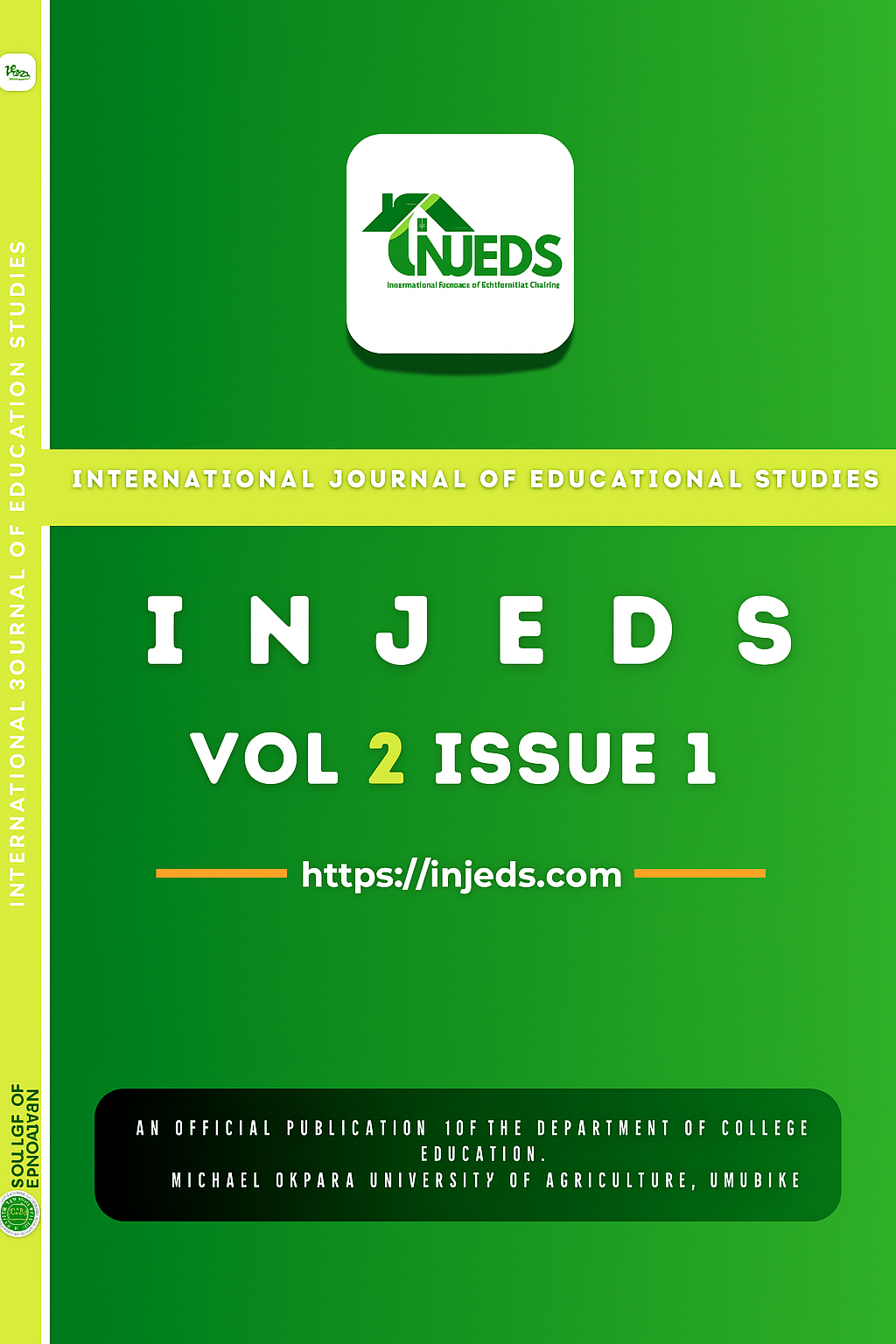Instructional Materials on Dyscalculia Students ‘Academic Achievement in Junior Secondary School Mathematics in Imo State.
Keywords:
dyscalculia students, mathematics, , geometry, achievements, instructional materialsAbstract
This study investigated Instructional Materials on Dyscalculia Students’ Academic Achievement in Junior Secondary School Mathematics in Imo State. The sample of the study consisted of 148 junior secondary school one (JSS1) dyscalculia students selected from a population of one thousand, four hundred and seventy-six (1476) dyscalculia students drawn from 22 Catholic mission owned schools in Orlu Education Zone of Imo State. The design for this study was quasi-experimental non-equivalent, non-randomized control group design. Mathematics Achievement Test on Geometry (MATOG) was the instrument used for the study. Two schools were assigned to experimental and control groups respectively for this study. Experimental group was taught using instructional materials while the control group was taught using conventional method. Two research questions and two null hypotheses guided this study. Descriptive statistics was used to answer the research questions while inferential statistics was applied using Analysis of Co-Variance (ANCOVA) for hypothesis testing at 0.05 level of significant. The results revealed that the use of instructional materials in teaching Mathematics increased dyscalculia students’ academic achievement in geometry more than the conventional method of teaching. There was a significant difference between the mean achievement scores of experimental and control groups in favour of the experimental group. Both male and female dyscalculia students in the experimental group benefited highly as a result of instructional materials used in the teaching and learning process though gender was not significant. Based on the results of this study, it was recommended that Mathematics teachers should use instructional materials to teach Mathematics concepts to dyscalculia students.





